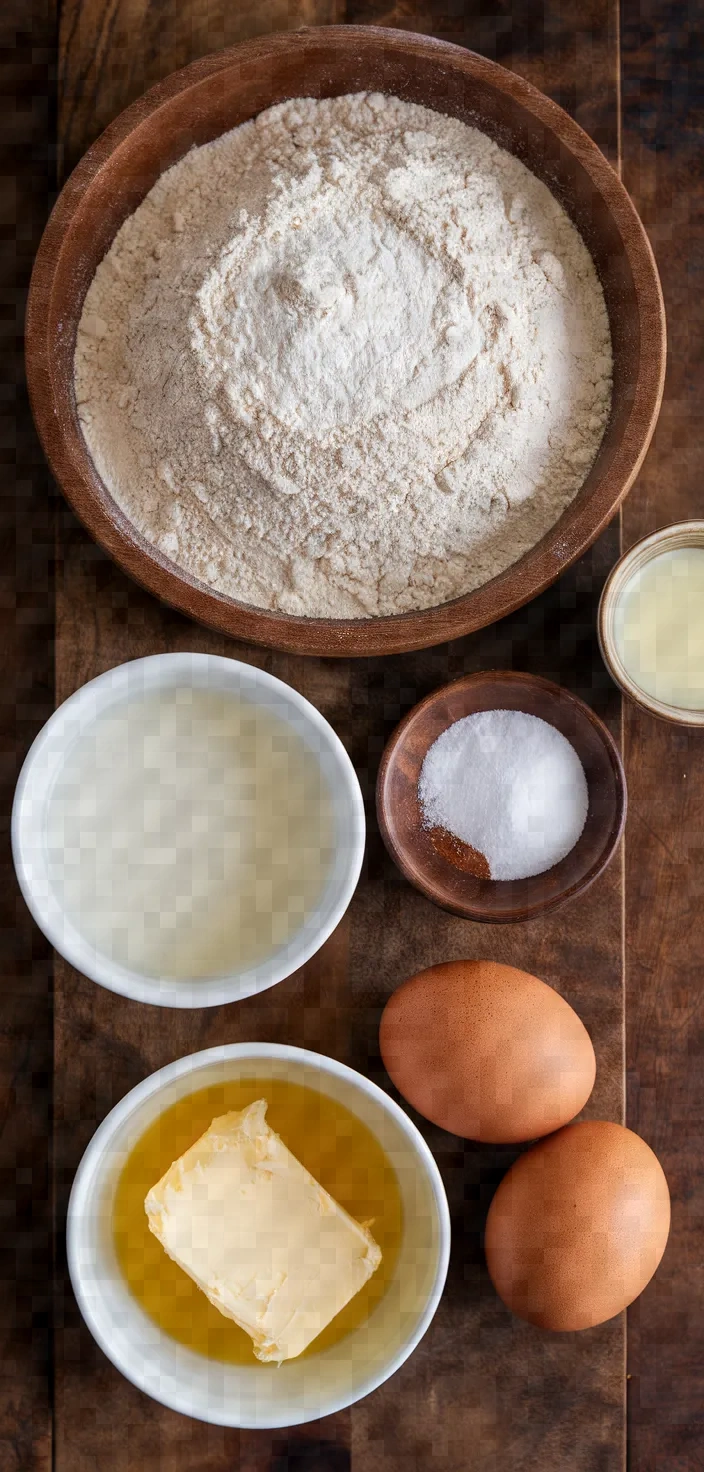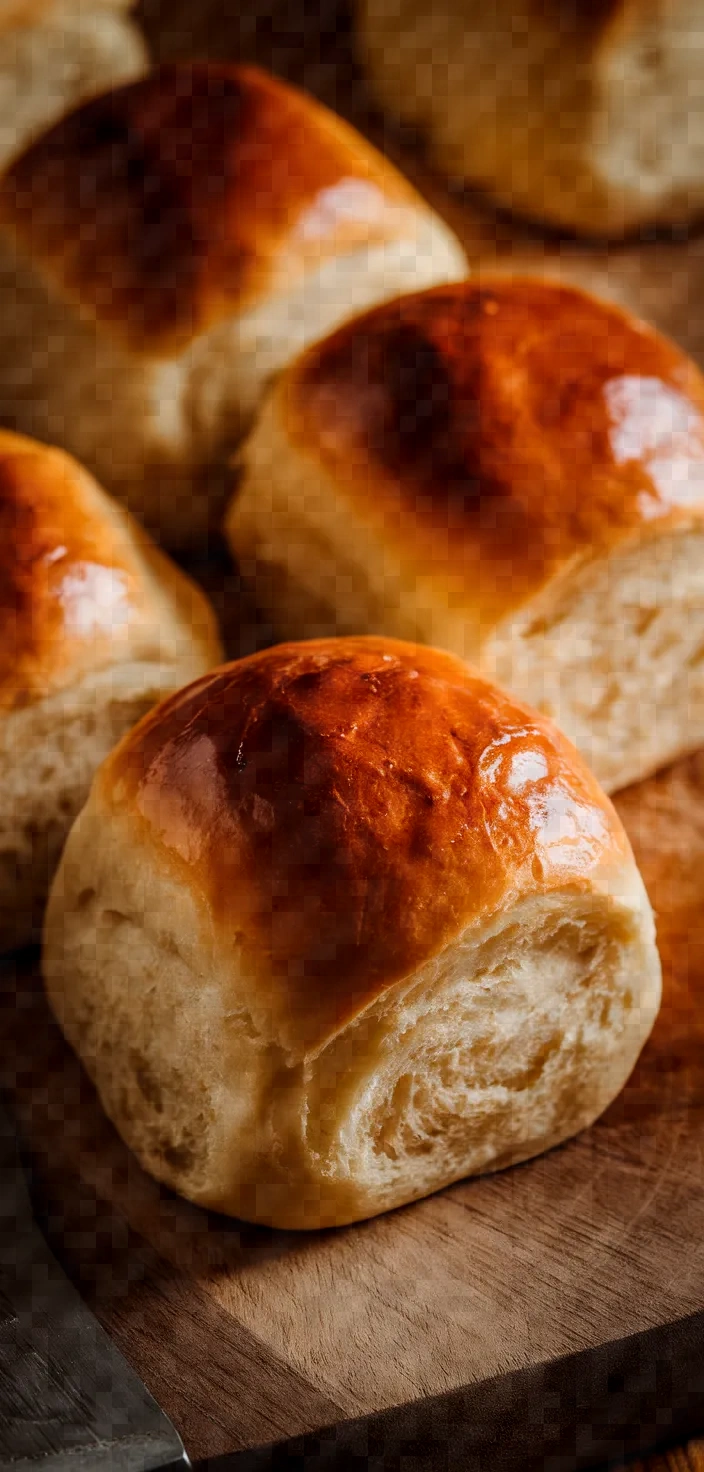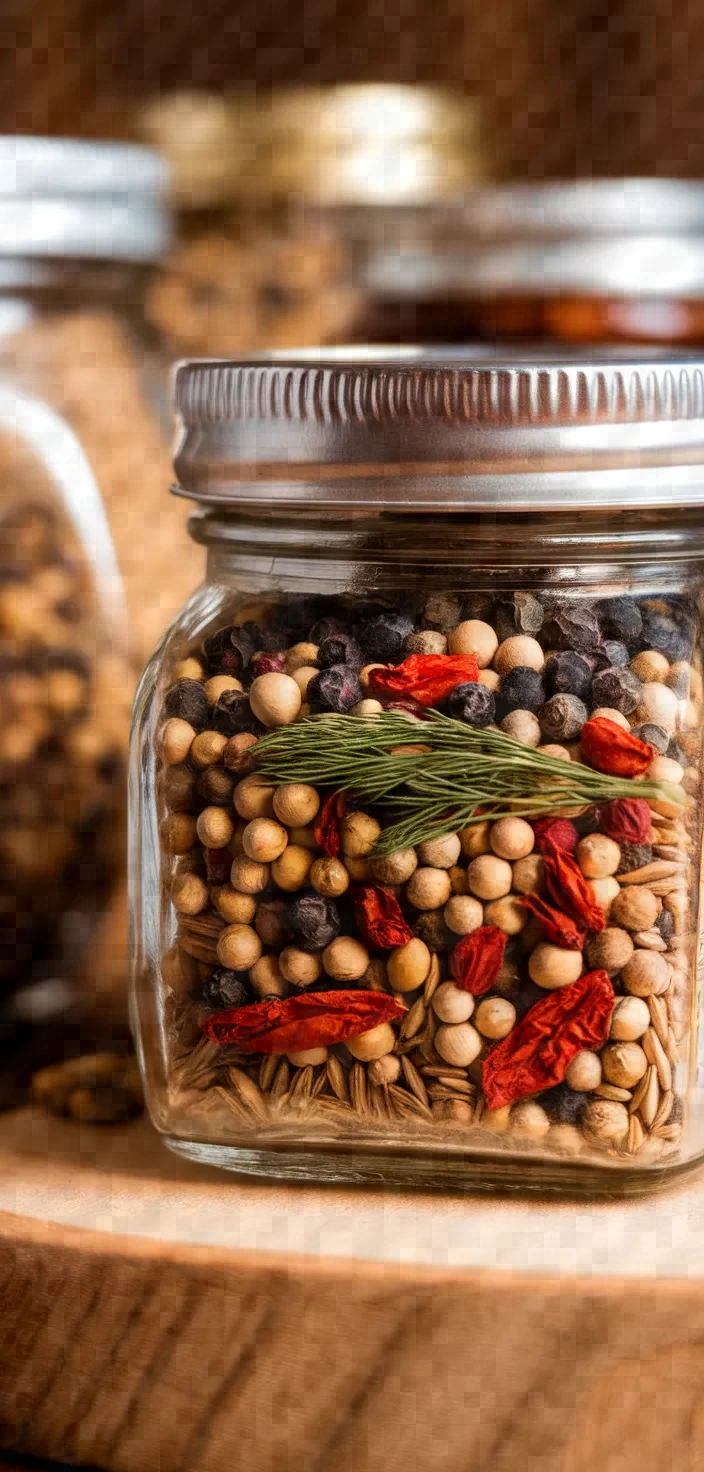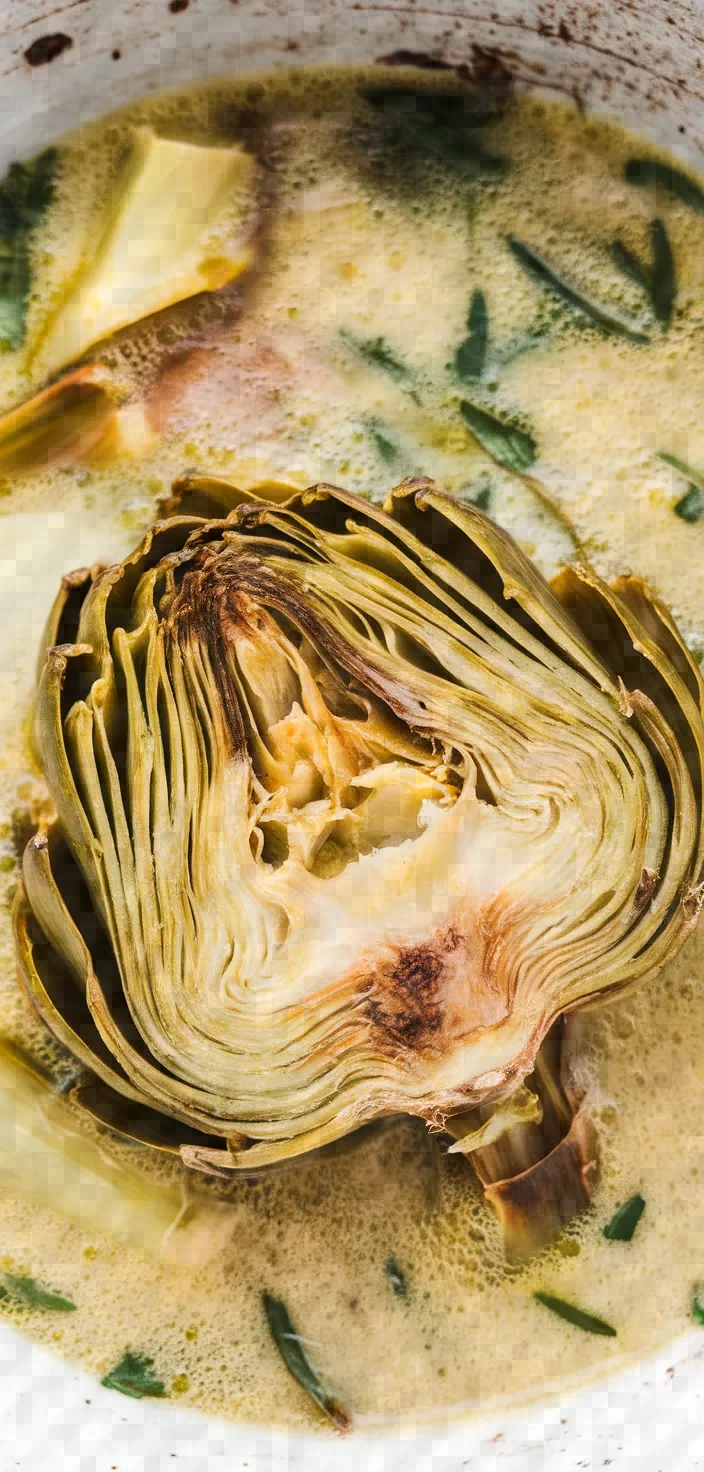There’s nothing quite like the warm, buttery aroma of freshly baked buns wafting through your kitchen—it’s a bit like a warm hug from your grandma, but in carbohydrate form. Ready to turn your kitchen into a bakery wonderland? Let’s dive into crafting these irresistibly fluffy and golden rolls.

These soft dinner rolls made from homemade yeast combine the perfect balance of texture and taste. They have the structure of all-purpose flour, the slight sweetness of granulated sugar, and the rich combination of milk and butter that certainly makes them not just satisfactory but also comforting.
Ingredients

- All-purpose flour: Provides structure; rich in carbohydrates and protein.
- Active dry yeast: Leavening agent; helps dough rise, essential for soft texture.
- Granulated sugar: Adds sweetness; feeds yeast, aiding in fermentation.
- Salt: Enhances flavor; regulates yeast activity and strengthens dough.
- Milk: Adds moisture and richness; contributes to tender crumb.
- Unsalted butter: Enhances flavor; adds richness and tenderness.
- Eggs: Bind ingredients; provide richness and contribute to a soft texture.
- Melted butter (for brushing): Adds a buttery finish; keeps rolls moist.
Ingredient Quantities
- 4 cups all-purpose flour
- 1 package (2 1/4 teaspoons) active dry yeast
- 1/4 cup granulated sugar
- 1 1/2 teaspoons salt
- 1/2 cup milk
- 1/4 cup water
- 1/4 cup unsalted butter, softened
- 2 large eggs
- 2 tablespoons unsalted butter, melted (for brushing)
How to Make this
1. In a big mixing bowl, mix together 1 cup of flour, the yeast, the sugar, and the salt. Stir very well so that the dry ingredients are mixed thoroughly.
2. In a small saucepan, warm the milk, water, and 1/4 cup of unsalted butter over low heat until very warm but not hot (about 120°F to 130°F).
3. Warm up the milk and mix in the following: butter, sugar, nutmeg, and salt. Stir until fairly homogenous. Then—gradually add this warm milk mixture to the dry ingredients, beating with an electric mixer on medium speed for about 2 minutes.
Melted butter and the following, in warm milk: sugar, nutmeg, and salt.
4. Include the eggs and a second cup of flour. Beat on high speed for one extra minute, then slowly stir in additional flour until you have a soft dough.
5. Place the dough on a surface that has been lightly dusted with flour, and knead the dough. Do this for 6-8 minutes, and be assured that the time spent making this dough is worth it. What you are trying to achieve in this step is a smooth, elastic, and kneadable dough that is not too sticky or dry.
6. Put the dough in a bowl that has been greased. Turn the dough in the bowl so that the top is also greased. Cover the bowl with a kitchen towel that has been freshly laundered. Then place the bowl with the covered dough in a warm area of your house. Let the dough have its first rise. You should check on the dough in 30 minutes to see if it is rising properly.
7. Gently punch the dough down and turn it out onto a floured surface. Lightly flour your hands. Divide the dough into 16 equal pieces. Use the next series of steps to form each piece into a ball.
8. Put the dough balls that have taken shape into a baking pan that has been greased. Let them rest and rise in a warm location for half an hour to 45 minutes—or until they’ve nearly doubled—while you cover them as if they’re in the kind of cover band that you wouldn’t be embarrassed to see.
9. Set the oven to 375°F (190°C) to preheat. The rolls go in for about 15-20 minutes and are done when they are golden brown.
10. Take the buns out of the oven and brush the tops with 2 tablespoons of melted butter. Let them cool for a little while before you serve them.
Equipment Needed
1. Mixing bowls (1 large, 1 medium)
2. Measuring cups and spoons
3. Saucepan
4. Electric mixer
5. Spatula or wooden spoon
6. Rolling pin (optional, but helpful for kneading)
7. Kitchen towel
8. Baking pan
9. Oven
10. Pastry brush for applying melted butter
FAQ
- Q: Can I use instant yeast instead of active dry yeast?A: Yes, you can use instant yeast in the same quantity as the recipe calls for fresh yeast. You can also skip the step of activating the yeast in water if you are using instant yeast.
- Q: Can I make these rolls ahead of time?A: Yes, the dough can be prepared, allowed to rise, and then shaped into rolls that can be stored in the fridge overnight. Let them warm up and rise to room temperature before baking.
- Q: How do I know when the dough has risen enough?A: The dough should be twice its original size. You can tell if it’s ready by gently pressing a finger into the dough; if the indentation stays, it’s ready.
- Q: Can I freeze the rolls after baking?A: Yes, allow the rolls to cool completely, then freeze them in an airtight container or bag. Before serving, reheat them in the oven.
- Q: What can I substitute for milk to make it dairy-free?A: You can substitute regular milk with almond milk, soy milk, or any other non-dairy milk alternative.
- Q: What is the best way to store leftovers?A: Keep any rolls that are left over in an airtight container at room temperature for up to 3 days, or store them in the freezer for a longer period.
Soft Homemade Yeast Dinner Roll Recipe Substitutions and Variations
All-purpose flour: Substitute with whole wheat flour for a heartier roll. Replace with bread flour for a chewier texture that you might find in some rolls.
Dry yeast in a state of active well-being: Use instant yeast (in the same quantities, of course), but don’t forget you might not need to prove it in H2O first.
Sugar, in granule form, can be replaced in recipes with one of two options: honey or maple syrup. When opting for either honey or maple syrup, it’s important to keep in mind that they are both quite a bit sweeter than sugar. Therefore, use less of either than you would sugar. Specifically, if a recipe calls for a cup of sugar, use three-quarters of a cup of honey or maple syrup instead. Also, remember that honey and maple syrup are both quite a bit heavier than sugar. So, if the recipe you’re working with is particularly sensitive to weight, use the guide above for a rough conversion.
Almond or soy milk can be used in place of milk to create a nondairy version.
Coconut oil or margarine work well in place of unsalted butter for a dairy-free option.
Pro Tips
1. Temperature Tip Ensure that the milk, water, and butter mixture is between 120°F to 130°F. Using a thermometer can help. If the mixture is too hot, it might kill the yeast; if it’s too cool, the yeast might not activate properly.
2. Flour Adjustment The amount of flour you need can vary based on humidity and flour type. Begin by adding 3 cups of flour gradually (including the initial mix) and then add the rest slowly until the dough becomes smooth and elastic while kneading.
3. Kneading Technique While kneading, use the heel of your hand to push the dough away from you, then fold it back over itself. Rotate the dough slightly and repeat. This helps develop the gluten structure necessary for a good texture.
4. Rising Environment To create an ideal warm environment for the dough to rise, preheat your oven at its lowest setting for a couple of minutes, then turn it off. Place the covered bowl inside – just ensure your oven is not too hot.
5. Uniform Size When dividing the dough into 16 pieces, use a kitchen scale to weigh each piece for consistency. This ensures even baking and a professional appearance.

Soft Homemade Yeast Dinner Roll Recipe
My favorite Soft Homemade Yeast Dinner Roll Recipe
Equipment Needed:
1. Mixing bowls (1 large, 1 medium)
2. Measuring cups and spoons
3. Saucepan
4. Electric mixer
5. Spatula or wooden spoon
6. Rolling pin (optional, but helpful for kneading)
7. Kitchen towel
8. Baking pan
9. Oven
10. Pastry brush for applying melted butter
Ingredients:
- 4 cups all-purpose flour
- 1 package (2 1/4 teaspoons) active dry yeast
- 1/4 cup granulated sugar
- 1 1/2 teaspoons salt
- 1/2 cup milk
- 1/4 cup water
- 1/4 cup unsalted butter, softened
- 2 large eggs
- 2 tablespoons unsalted butter, melted (for brushing)
Instructions:
1. In a big mixing bowl, mix together 1 cup of flour, the yeast, the sugar, and the salt. Stir very well so that the dry ingredients are mixed thoroughly.
2. In a small saucepan, warm the milk, water, and 1/4 cup of unsalted butter over low heat until very warm but not hot (about 120°F to 130°F).
3. Warm up the milk and mix in the following: butter, sugar, nutmeg, and salt. Stir until fairly homogenous. Then—gradually add this warm milk mixture to the dry ingredients, beating with an electric mixer on medium speed for about 2 minutes.
Melted butter and the following, in warm milk: sugar, nutmeg, and salt.
4. Include the eggs and a second cup of flour. Beat on high speed for one extra minute, then slowly stir in additional flour until you have a soft dough.
5. Place the dough on a surface that has been lightly dusted with flour, and knead the dough. Do this for 6-8 minutes, and be assured that the time spent making this dough is worth it. What you are trying to achieve in this step is a smooth, elastic, and kneadable dough that is not too sticky or dry.
6. Put the dough in a bowl that has been greased. Turn the dough in the bowl so that the top is also greased. Cover the bowl with a kitchen towel that has been freshly laundered. Then place the bowl with the covered dough in a warm area of your house. Let the dough have its first rise. You should check on the dough in 30 minutes to see if it is rising properly.
7. Gently punch the dough down and turn it out onto a floured surface. Lightly flour your hands. Divide the dough into 16 equal pieces. Use the next series of steps to form each piece into a ball.
8. Put the dough balls that have taken shape into a baking pan that has been greased. Let them rest and rise in a warm location for half an hour to 45 minutes—or until they’ve nearly doubled—while you cover them as if they’re in the kind of cover band that you wouldn’t be embarrassed to see.
9. Set the oven to 375°F (190°C) to preheat. The rolls go in for about 15-20 minutes and are done when they are golden brown.
10. Take the buns out of the oven and brush the tops with 2 tablespoons of melted butter. Let them cool for a little while before you serve them.















